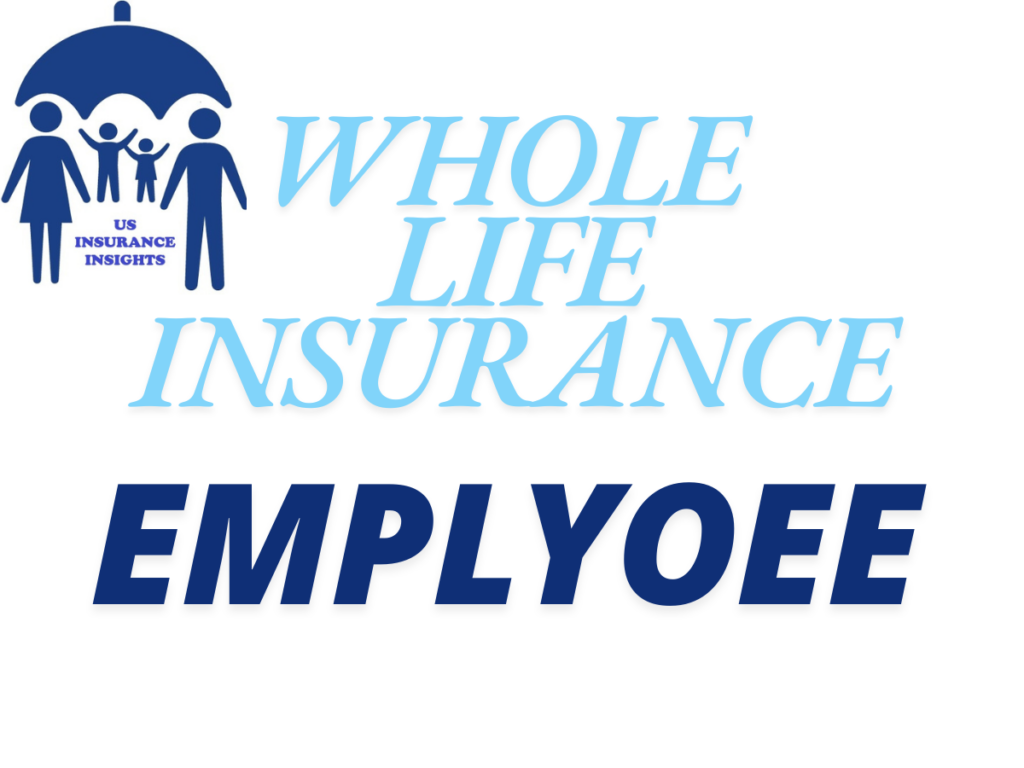When it comes to securing financial stability for yourself and your loved ones, A Comprehensive Guide to Whole Life Insurance for Employees can be a game-changer. This type of insurance not only provides a death benefit but also serves as a long-term financial tool with cash value accumulation. If you’re an employee in the USA, understanding how whole life insurance works, its benefits, and how to maximize it can greatly impact your financial future.
What Is Whole Life Insurance? (A Comprehensive Guide to Whole Life Insurance for Employees)
Whole life insurance is a type of permanent life insurance that covers you for your entire life, as long as you pay your premiums. Unlike term life insurance, which only lasts for a specific period, whole life insurance provides lifelong protection and includes a cash value component that grows over time.
The cash value acts as a savings account within your policy, earning interest or dividends. You can borrow against it or withdraw funds for significant expenses, making it a versatile financial tool.
Learn more about whole life insurance.
Why Should Employees Consider Whole Life Insurance?(A Comprehensive Guide to Whole Life Insurance for Employees)
For employees in the USA, whole life insurance offers several advantages:
Financial Security for Your Family:
A guaranteed death benefit ensures your loved ones are cared for in your absence.
Cash Value Growth:(A Comprehensive Guide to Whole Life Insurance for Employees)
Over time, the cash value grows tax-deferred, providing an additional financial resource.
Stability in Retirement:(A Comprehensive Guide to Whole Life Insurance for Employees)
You can supplement your retirement income by accessing your policy’s cash value.
Flexibility in Coverage:
Whole life insurance can cover outstanding debts, college expenses for your children, or even fund a business.
How Whole Life Insurance Works
1. Premium Payments
You’ll pay fixed premiums throughout your life. A portion goes toward your death benefit, and another part contributes to the policy’s cash value.
2. Cash Value Accumulation
As you make payments, the cash value grows. Think of it as a piggy bank that gets fuller each year. Some policies even offer dividends, which you can reinvest, withdraw, or use to reduce premiums.
3. Borrowing Against Your Policy
One unique aspect of whole life insurance is that you can borrow money against the cash value. For instance, if you need funds for a home renovation or a medical emergency, your policy’s cash value can come to the rescue.
Discover more about borrowing from life insurance policies.
Real-Life Example
Let’s consider Jane, an office manager in New York. She bought a whole life insurance policy at age 30 with a $500,000 death benefit. Over the years, her policy accumulated a cash value of $50,000. When Jane decided to start her own business at age 45, she borrowed $20,000 from her policy to fund her startup. Not only did her policy provide financial security for her family, but it also became a critical tool in achieving her entrepreneurial dreams.
Step-by-Step Guide to Choosing Whole Life Insurance
Assess Your Needs: Determine how much coverage you’ll need to support your family, pay off debts, and cover future expenses like college tuition.
Research Providers: Compare different insurance companies. Look for strong financial ratings and customer reviews.
Find top-rated insurance companies here.
Understand the Policy Terms: Ensure you know the premium amount, cash value growth rate, and any fees or limitations.
Consult an Advisor: A financial advisor can help you choose the right policy based on your income, age, and goals.
Review and Update: Periodically review your policy to ensure it aligns with your evolving needs.
Common Misconceptions About Whole Life Insurance
It’s Too Expensive:
While premiums are higher than term life insurance, the lifelong coverage and cash value make it a worthwhile investment.
It’s Only for the Wealthy:
Policies can be tailored to fit various budgets, making them accessible to most employees.
The Cash Value Takes Too Long to Grow:
Patience is key. The longer you hold your policy, the more benefits you’ll reap.
Tips for Employees
Start Early:
The younger you are when you buy a policy, the lower your premiums will be.
Use Workplace Benefits:
Some employers offer group life insurance plans with whole life options, often at discounted rates.
Leverage Tax Advantages:
The cash value grows tax-deferred, and loans against the policy are not taxed.
Conclusion
Whole life insurance is more than just a policy; it’s a financial tool that can provide lifelong security and flexibility. By understanding its features and benefits, you can make informed decisions that support your financial goals. Whether you’re looking to protect your family, save for the future, or invest in a personal dream, whole life insurance can be a valuable asset for employees in the USA
Ready to take the next step? Get a quote for whole life insurance today.
With proper planning and the right policy, whole life insurance can be the cornerstone of your financial strategy. Don’t wait—start building a secure future now!
Know more about A Comprehensive Guide to Whole Life Insurance for Employees

